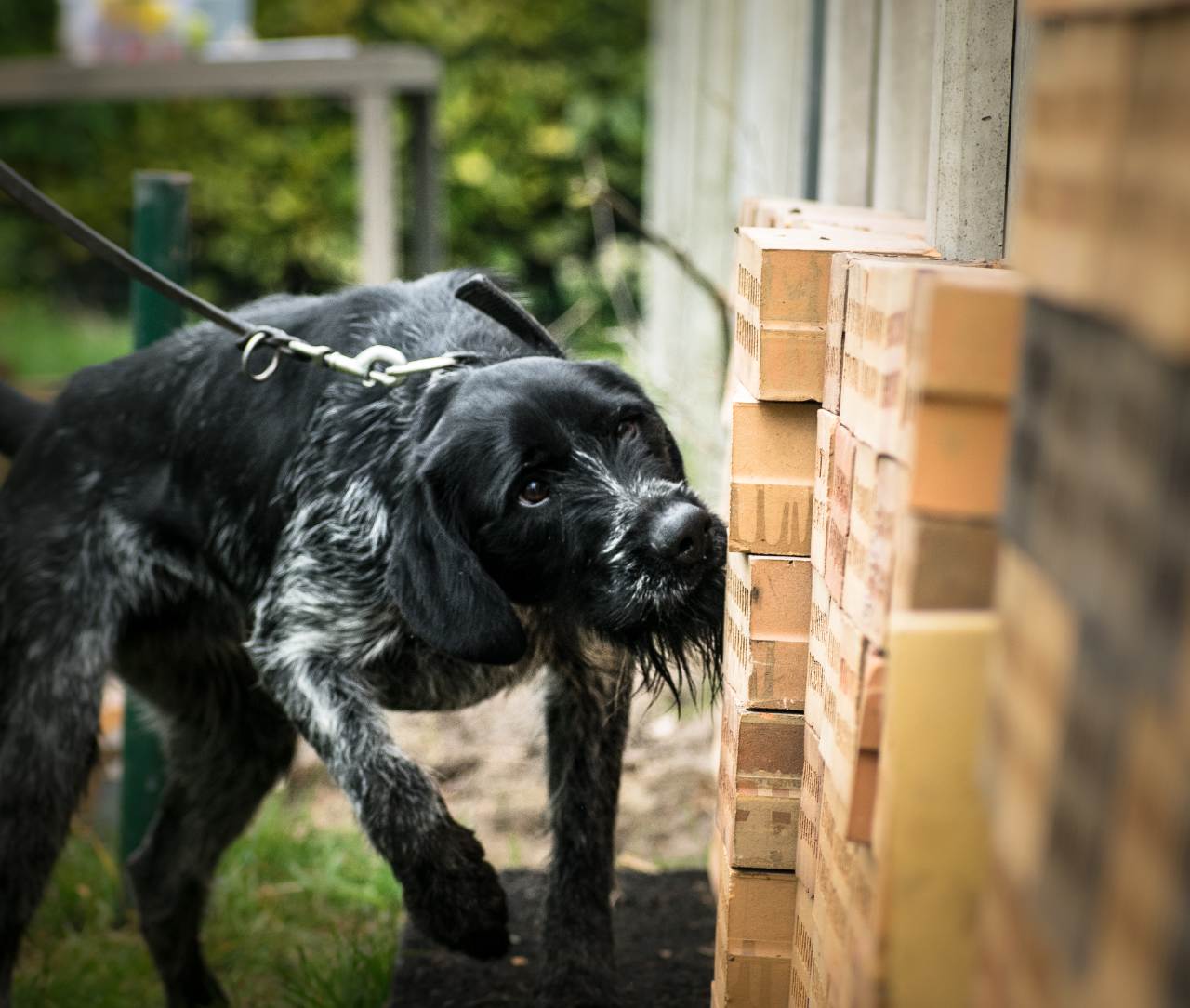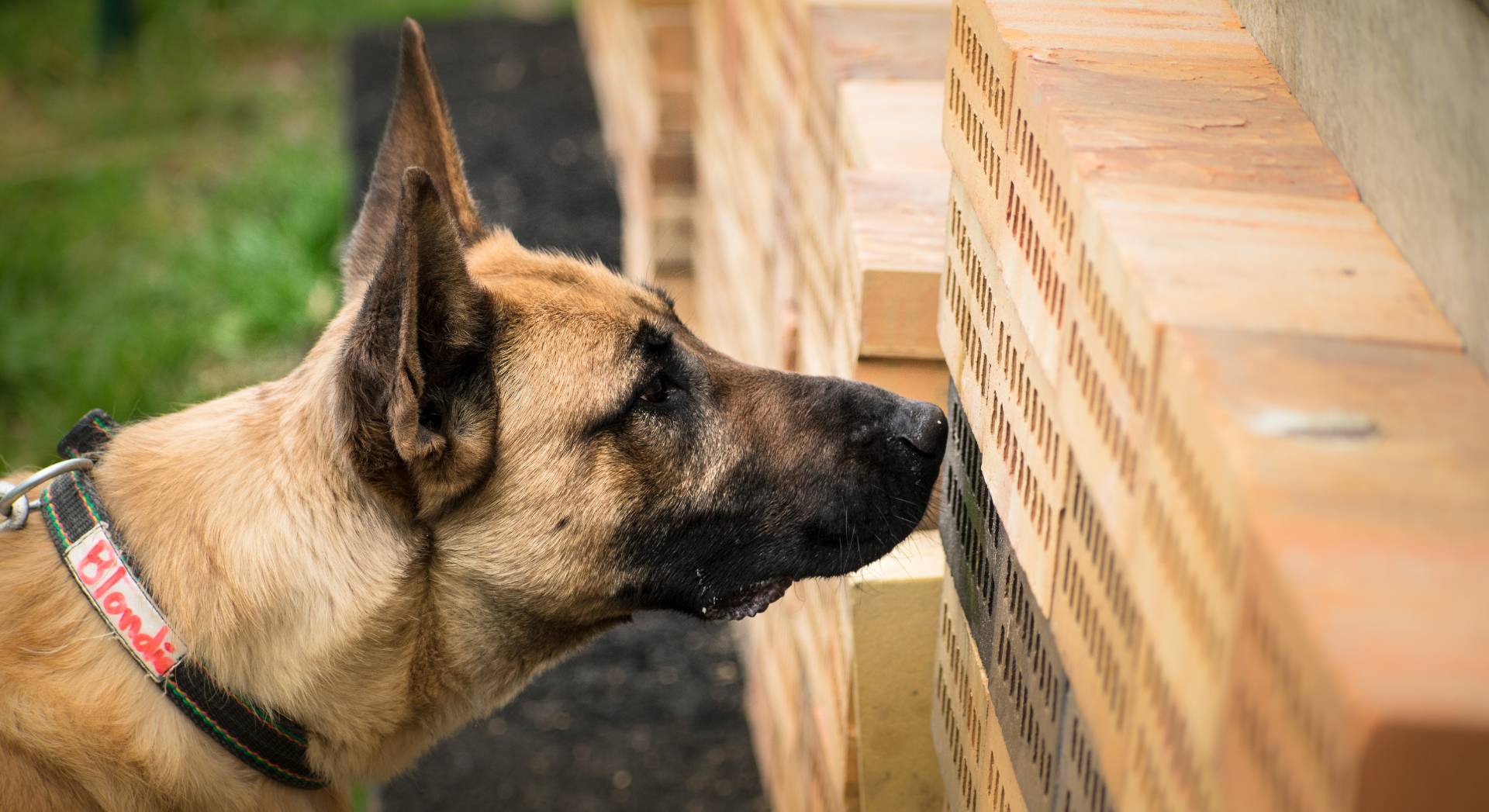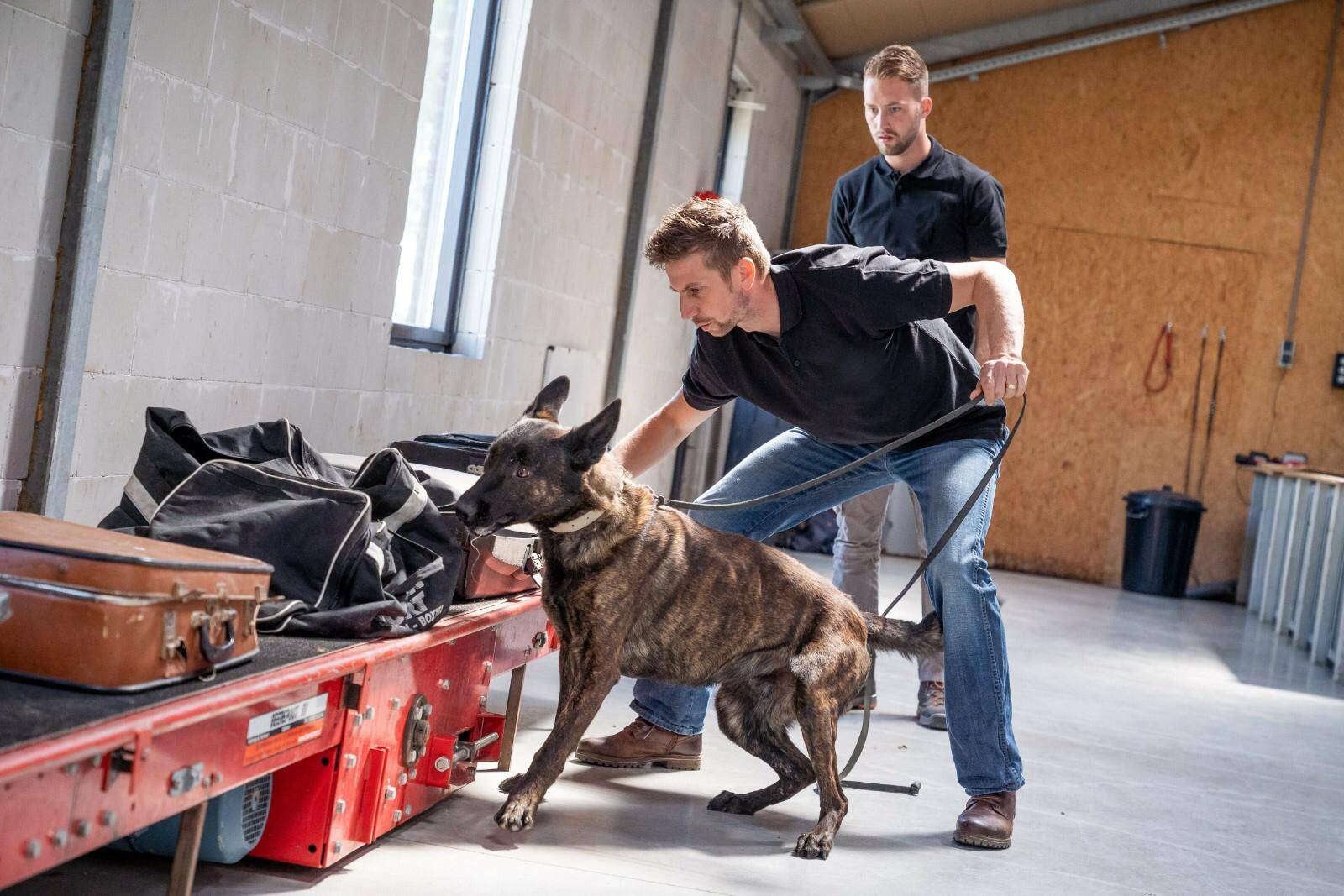How Are Drug-Sniffing Dogs Trained: A Comprehensive Guide to Their Crucial Role in Law Enforcement
Drug-sniffing dogs play a critical role in law enforcement, helping authorities detect illegal substances such as narcotics, explosives, and contraband. These highly trained dogs have an extraordinary sense of smell, making them indispensable tools in combating drug trafficking and ensuring public safety. But how exactly are these dogs trained to identify drugs? What methods are used to ensure their reliability and effectiveness in the field?
In this article, we’ll explore the intricate process of how drug-sniffing dogs are trained, the science behind their remarkable noses, and the different stages they undergo to become expert detectors.
Also read our article on how to train working dogs for more information.
1. Understanding the Science Behind a Dog’s Nose
Before diving into the training process, it’s essential to understand why dogs are so effective at detecting drugs. A dog’s sense of smell is thousands of times more powerful than that of a human. While humans have around 5 million scent receptors, dogs have over 300 million, allowing them to detect even the faintest traces of substances.

Dogs use their noses to analyze complex layers of scents, breaking them down into individual components. This ability is what makes them perfect for identifying specific smells, such as the presence of narcotics, even when the drugs are hidden in complex environments like cars or luggage.
2. Selecting the Right Dogs for Drug Detection
Not every dog is suited for drug detection work. Certain breeds excel in this field due to their keen sense of smell, intelligence, and high energy levels. Commonly used breeds for drug-sniffing include:
- German Shepherds
- Belgian Malinois
- Labrador Retrievers
- Springer Spaniels
These breeds are preferred for their trainability, focus, and stamina. While breed is important, each individual dog must also possess the right temperament and characteristics. Trainers often look for dogs that are highly motivated by rewards, whether it be food or play, as this trait is critical for successful training.
3. The Initial Selection and Socialization Process
Before formal drug detection training begins, dogs must go through an initial selection and socialization phase. In this stage, trainers assess the dog’s temperament and suitability for detection work. The dog should be confident, curious, and eager to explore its surroundings without showing signs of fear or anxiety.
Socialization:
Dogs are introduced to various environments to ensure they can handle the different settings in which they will work, such as airports, train stations, and border checkpoints. They may encounter loud noises, moving vehicles, and crowds, which they must remain calm around. Proper socialization is crucial so that dogs do not become distracted by their surroundings during real-life operations.
4. Introducing the Dog to Scent Work
Once a dog has passed the initial selection, they are introduced to scent detection training. This process begins with teaching the dog to associate a specific scent (in this case, drugs) with a reward, such as food or a favorite toy.
Steps in Scent Work Training:
- Scent Introduction: Dogs are exposed to the target scent (e.g., cocaine, heroin, or marijuana) in a controlled environment. At first, the scent is paired with the dog’s favorite reward, such as a ball or treat.
- Positive Reinforcement: Every time the dog correctly identifies the scent, they are immediately rewarded. This reinforcement conditions the dog to recognize the scent and signals that finding it leads to something positive.
- Gradual Complexity: As the dog becomes more skilled at recognizing the drug scent, the training environment becomes more complex. Trainers will hide the scent in different places or mix it with other smells to challenge the dog’s ability to detect the specific target scent.

5. Training Techniques: Active vs. Passive Alerts
Drug-sniffing dogs are trained to provide either an active or passive alert when they detect the target scent.
- Active Alert: The dog is trained to bark, scratch, or paw at the location where the drugs are hidden. This type of alert is often used in outdoor environments or areas where physical damage is less of a concern.
- Passive Alert: The dog sits or stands still near the scent source without making noise or causing disruption. Passive alerts are commonly used in sensitive areas, such as airports or inside vehicles, where the dog’s calm behavior is preferable.
The choice between active and passive alerts depends on the operational environment. Passive alerts are often favored in public spaces to avoid drawing attention or causing damage, while active alerts might be better suited for fieldwork or search operations.
6. Building Reliability Through Repetition and Variability
Repetition is key in drug detection training. Dogs undergo countless practice sessions where the scent is hidden in various environments, including buildings, vehicles, luggage, and open fields. Each session reinforces the dog’s association between the scent and the reward, solidifying their ability to detect drugs consistently.
Adding Variability:
To ensure the dog can perform reliably in real-world scenarios, trainers introduce variability into the training. This may involve:
- Different Scents: Dogs are trained to detect multiple types of drugs, such as cocaine, heroin, methamphetamine, and marijuana. Each scent is individually introduced, and the dog learns to identify each one separately.
- Challenging Environments: Trainers set up more challenging environments for detection, such as busy airports, underground facilities, or confined spaces, helping the dog learn to focus under pressure.
- Time Intervals: Dogs are trained to locate scents within different timeframes, teaching them to maintain focus and persistence during long searches.

7. Real-World Simulations and Testing
Once a dog has mastered basic detection in controlled settings, they are put through real-world simulations. These practice scenarios closely resemble the environments where they will work. For example, they may be tasked with searching cars at a mock checkpoint or inspecting luggage in a simulated airport.
During these simulations, trainers observe the dog’s behavior to ensure they are working methodically and accurately. Dogs that perform well are eventually tested in more difficult situations to assess their readiness for deployment.
Certification and Evaluation:
Many law enforcement agencies require drug-sniffing dogs to be certified before they can work in the field. Certification ensures the dog can reliably detect drugs under various conditions and perform to a high standard.
Dogs undergo formal evaluation, where they must demonstrate their ability to detect hidden narcotics in a controlled environment. Their success rate is monitored, and only those dogs that meet stringent accuracy criteria are certified for active duty.
8. Ongoing Training and Maintenance
Training doesn’t stop once a dog is deployed. Regular maintenance training is crucial to keep the dog’s skills sharp. Handlers and trainers work with the dogs frequently, setting up practice sessions to reinforce their detection abilities.
Training with Handlers:
Drug-sniffing dogs are typically assigned to a specific handler, and the bond between them is essential. Handlers must learn to read their dog’s signals and respond appropriately. Handlers and dogs continue training together to strengthen their partnership and ensure they remain effective as a team.
Periodic Testing:
Many agencies require drug-sniffing dogs to undergo periodic re-certification or testing to ensure they maintain a high level of accuracy. This testing ensures that the dogs remain reliable and continue to perform well in the field.
9. The Role of the Handler: A Crucial Partnership
While the dog’s ability to detect drugs is vital, the handler plays an equally important role in the operation. Handlers must be attuned to their dog’s behavior and signals, interpreting their cues to determine when a scent has been detected.
Handlers are also responsible for ensuring the dog’s well-being, both physically and mentally. The intense nature of detection work can be stressful for dogs, so handlers must ensure that their partner receives adequate rest, exercise, and care.
Conclusion: The Making of a Drug-Sniffing Dog
The process of training drug-sniffing dogs is both complex and fascinating. From selecting the right breed to teaching them to identify specific narcotic scents, these canines undergo rigorous and specialized training to become reliable tools in the fight against drug trafficking.
Their ability to detect even minute traces of narcotics makes them invaluable to law enforcement agencies worldwide. However, the success of drug-sniffing dogs also depends on their ongoing training, strong bond with their handlers, and the environments they are trained to navigate.
Ultimately, the combination of a dog’s extraordinary olfactory abilities and the expertise of their human partners ensures that these teams are ready to tackle the challenges of detecting illegal substances, helping to keep communities safe from the dangers of drug trafficking.
Interested in our dogs at K10 Workingdogs B.V. ?

